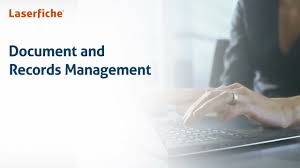
The Importance of Document and Records Management
In today’s digital age, the volume of documents and records that organizations need to manage has grown exponentially. Effective document and records management practices are essential for businesses to ensure compliance, improve efficiency, and enhance decision-making processes.
Document management involves the organization, storage, retrieval, and sharing of electronic documents within an organization. It helps streamline workflows, reduce paper clutter, and ensure that information is easily accessible when needed.
Records management, on the other hand, focuses on the lifecycle of records from creation to disposal. It involves identifying what constitutes a record, classifying records based on their importance and retention requirements, and ensuring that they are stored securely and in compliance with regulations.
Implementing robust document and records management systems offers several benefits to organizations:
- Compliance: Properly managing documents and records helps organizations comply with legal requirements, industry regulations, and data protection laws.
- Efficiency: By digitizing documents and implementing automated workflows, organizations can improve efficiency by reducing manual processes and streamlining access to information.
- Risk mitigation: Effective document and records management reduces the risk of data breaches, loss of critical information, or non-compliance penalties.
- Decision-making: Access to accurate and up-to-date information through well-managed documents and records enables better decision-making at all levels of an organization.
In conclusion, investing in document and records management is crucial for organizations looking to stay competitive in today’s fast-paced business environment. By adopting best practices in managing their information assets, businesses can unlock numerous benefits that contribute to their long-term success.
Understanding Document and Records Management: Key FAQs Explained
- How do you control documents and records?
- What is the difference between information management and document management?
- What does a records management do?
- What is difference between documents and records?
How do you control documents and records?
Controlling documents and records is a critical aspect of effective document and records management. Organizations typically establish document control procedures to ensure that documents are properly created, reviewed, approved, distributed, accessed, and updated as needed. By implementing document control measures such as version control, access restrictions, audit trails, and regular reviews, organizations can maintain the integrity and accuracy of their documents and records. Additionally, utilizing document management systems that offer robust security features and automation capabilities can further enhance control over documents and records throughout their lifecycle.
What is the difference between information management and document management?
The difference between information management and document management lies in their scope and focus. Information management encompasses a broader range of data beyond just documents, including structured and unstructured data, knowledge assets, and metadata. It involves the strategic planning, organizing, controlling, and evaluating of all types of information within an organization to support decision-making and achieve business objectives. On the other hand, document management specifically deals with the handling of electronic or physical documents throughout their lifecycle, from creation to disposal. It focuses on tasks like document capture, storage, retrieval, version control, and security. While information management is about managing all types of organizational data comprehensively, document management is more specific to the control and organization of documents specifically.
What does a records management do?
A records management system plays a crucial role in organizing, storing, and maintaining an organization’s records throughout their lifecycle. It involves defining policies and procedures for the creation, retention, retrieval, and disposal of records in a systematic and efficient manner. Records management ensures that important information is properly documented, archived securely, and easily accessible when needed. By implementing a robust records management system, organizations can improve compliance with regulations, enhance operational efficiency, mitigate risks associated with data loss or breaches, and support informed decision-making processes across the organization.
What is difference between documents and records?
In the realm of document and records management, a commonly asked question revolves around distinguishing between documents and records. Documents typically refer to any form of information or content that is created, received, or used during the course of business activities. They are often considered as working drafts, reports, memos, or emails that are actively being revised or updated. On the other hand, records are finalized versions of documents that hold evidential or historical value for an organization. Records are typically static and serve as a snapshot of past transactions, decisions, or actions taken by an organization. Understanding the difference between documents and records is crucial for implementing effective management strategies that ensure proper categorization, retention, and disposal practices in compliance with regulatory requirements.
